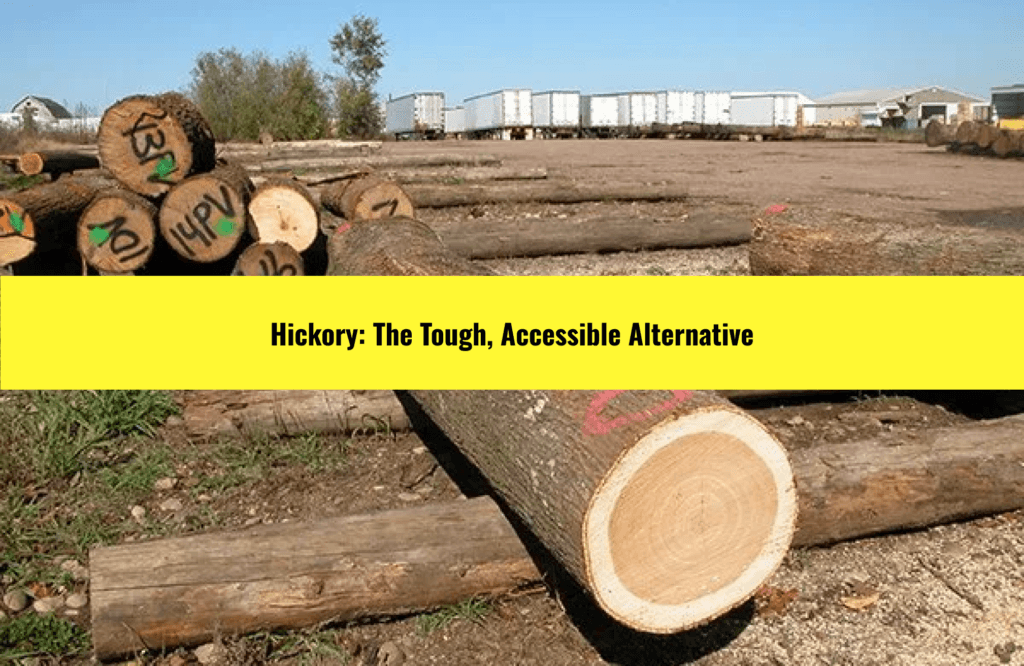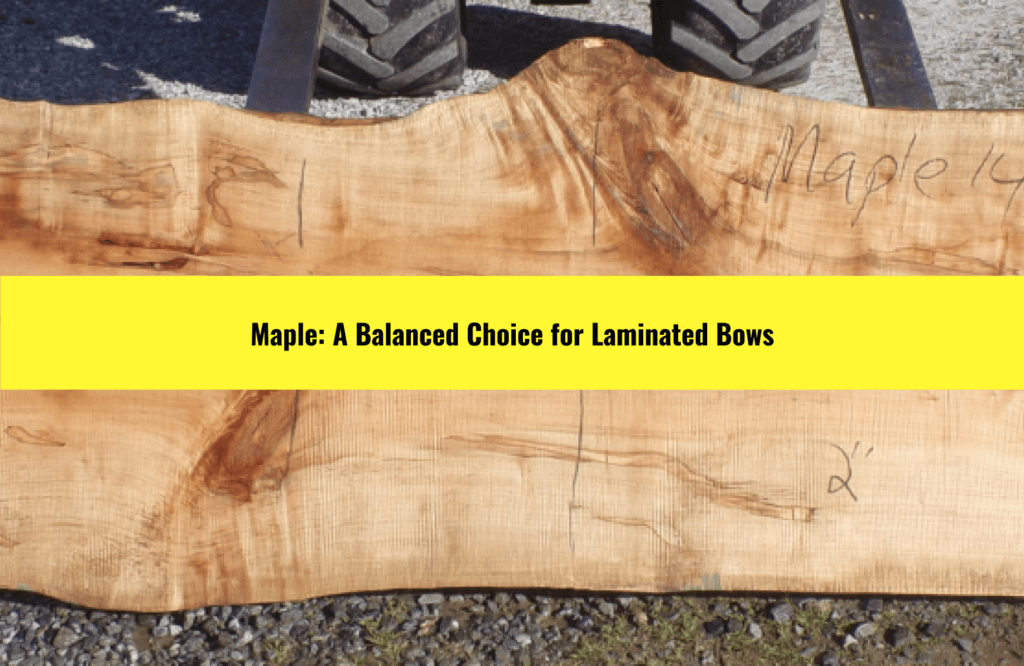When building a bow, selecting the correct wood is essential. Different types of bows require specific woods with unique properties to function effectively. A good bow is durable, elastic, and capable of storing and releasing energy efficiently.
In this guide, we’ll explore the best wood for bows, focusing on specific types of wood and their suitability for various bows like longbows, recurve bows, and composite bows. We’ll provide detailed, factual information without exaggeration, ensuring you get a clear understanding of what each wood offers.
Why Yew is the Best Wood for Traditional Longbows
Yew wood has long been regarded as the superior choice for making longbows, especially in traditional European archery. This isn’t a coincidence, as yew possesses specific characteristics that make it ideal for high-performance bows.
- Tensile and Compressive Strength: The unique structure of yew allows for an efficient balance of tensile strength in the sapwood and compressive strength in the heartwood. This means that yew can handle the forces exerted by the bowstring on the limbs without cracking or losing shape.
- Historical Evidence: One key example of its effectiveness is the English longbow, which was predominantly made of yew and played a significant role in medieval warfare. Archers could achieve draw weights as high as 150 pounds using yew longbows.
- Modern Use: Even today, yew remains the go-to wood for traditional bowyers crafting longbows due to its unmatched performance in tension and compression.
For these reasons, yew remains a top choice for longbow making. However, availability issues and cost have led to the exploration of other wood types that are also highly effective.
Hickory: The Tough, Accessible Alternative
Hickory is one of the most widely used woods for bow making in North America. It is particularly well-suited for beginner and intermediate bowyers because of its durability and relative ease of use.

- High Tensile Strength: Hickory has excellent tensile strength, making it resistant to snapping under pressure. It is less prone to fractures than many other woods, which is a major advantage when crafting a bow with higher draw weights.
- Ease of Access: Unlike yew, which can be rare and expensive, hickory wood staves are readily available in many regions, making it a practical choice for both novice and experienced bowyers.
- Suitability for Longbows and Recurve Bows: Because of its durability and strength, hickory is commonly used in both longbows and recurve bows.
Hickory may not offer the same lightweight elasticity as yew, but its strength and availability make it a solid option for building a bow that will last for years.
Osage Orange: The Strongest Bow Wood
When it comes to durability and longevity, Osage orange stands out as arguably the best wood for bows. Its reputation is built on its exceptional compressive strength and resilience under strain.

- Unmatched Durability: Osage orange is famous for its ability to withstand the intense forces generated by drawn bowstrings. A properly crafted Osage orange bow can last decades without warping or losing its strength.
- Density and Hardness: This wood is exceptionally dense, allowing for high-draw-weight bows that can consistently deliver powerful shots. Bowyers often prefer Osage for making bows with draw weights upwards of 100 pounds.
- Bendability Without Breakage: Despite being one of the hardest woods used in bow making, Osage orange has enough flexibility to bend without cracking, which is critical in a well-made bow.
Given its properties, Osage orange is often considered the best all-around wood for bow making, especially for those looking to craft bows with higher performance requirements.
Maple: A Balanced Choice for Laminated Bows
Maple is a common choice for laminated bows, which are made by bonding several layers of wood together. While it might not possess the legendary status of yew or Osage orange, maple offers a solid combination of strength, elasticity, and ease of use.

- Ideal for Laminated Recurve Bows: Maple‘s even grain and elasticity make it a popular core material in laminated recurve bows. It provides enough flexibility for the curved limbs while maintaining sufficient strength to prevent breakage.
- Cost-Effective: Maple is more affordable and easier to source than many exotic woods, making it a practical option for budget-conscious bowyers.
- Versatility: While maple is often used in recurve bows, it is also suitable for longbows, especially when used as part of a laminate structure.
Willow: A Lightweight Option for Low-Draw-Weight Bows
Willow is not as commonly used in high-performance bows, but it has its place in archery for lower-draw-weight bows or practice bows. The key advantage of willow is its lightweight nature, which allows for quicker movements and easier handling.

- Flexible but Weak: Willow is very flexible but lacks the compressive strength of harder woods like Osage orange. This makes it less suitable for high-draw-weight bows but a good choice for beginners or those making practice bows.
- Availability: Willow is readily available in many regions, making it a cost-effective choice for bowyers on a budget.
For serious archers, willow is typically not the first choice for crafting bows, but it can serve as a stepping stone for beginners learning the fundamentals of bow making.
Exotic Woods: Bamboo, Ipe, and Lemonwood
Experienced bowyers sometimes experiment with exotic woods like Bamboo, Ipe, and Lemonwood. These woods are not traditional choices but have unique properties that can add specific benefits to bow making.
- Bamboo: Known for its elasticity, bamboo is often used in laminated bows as a backing material to add extra flexibility. Its light weight also makes it a good choice for fast, light bows.
- Ipe: This dense South American hardwood is incredibly strong, making it ideal for high-draw-weight bows. However, its density makes it more challenging to work with.
- Lemonwood: A traditional choice for American flatbows, lemonwood offers a balance between flexibility and strength, although it is not as durable as Osage orange or hickory.
While these exotic woods are less commonly used, they can offer unique benefits in certain types of bow builds, particularly for advanced bowyers looking to experiment with different materials.
How to Choose the Best Wood for Recurve Bows
Recurve bows require a different set of wood characteristics than longbows due to the curves in their limbs, which store more energy. The best wood for recurve bows must have a high degree of elasticity and flexibility.
- Maple and Osage Orange are two of the most popular choices for recurve bows. Their flexibility allows the limbs to bend deeply without snapping, ensuring smooth energy transfer during shooting.
- Laminated Construction: Many recurve bows use laminated wood construction, with a flexible outer layer like bamboo combined with a strong core wood like maple.
How to Select a Bow Stave
Choosing the right bow stave is just as important as choosing the right wood type. A bow stave is a section of wood that will eventually be shaped into a bow. When selecting a bow stave, look for the following characteristics:
- Straight Grain: The grain of the wood should be as straight as possible. Crooked grain can cause weak spots in the bow, leading to breakage.
- Knot-Free: Avoid staves with knots or imperfections. These flaws can weaken the wood, especially in high-tension bows.
- Sufficient Length: Ensure that the stave is long enough for the type of bow you plan to build. For example, a longbow stave needs to be longer than a stave for a recurve bow.
Final Thoughts on Best Bow Woods
The best wood for your bow depends on the type of bow you’re building and your specific needs as an archer. Whether you’re crafting a longbow, recurve bow, or a hybrid, selecting the right wood is critical to the success of your project. Yew, Osage orange, hickory, and maple are all excellent choices, each offering its unique set of advantages.
When selecting wood, always consider factors such as tensile strength, compressive strength, flexibility, and availability. By making an informed choice, you can create a bow that performs well and stands the test of time.
What is the best wood for making a longbow?
The best wood for making a longbow is traditionally yew, although hickory and Osage orange are also excellent choices due to their strength and flexibility.
Can I use hickory for a recurve bow?
Yes, hickory can be used for recurve bows due to its tensile strength, but Osage orange or maple may offer better performance in terms of flexibility and energy storage.
What wood is best for beginners in bow making?
Hickory is a great choice for beginners due to its availability and ease of use. It’s a forgiving wood that can withstand mistakes in shaping.
How do I select the right bow stave?
Look for a bow stave with straight grain, minimal knots, and sufficient length for the type of bow you’re making. Osage orange and hickory staves are popular options.

